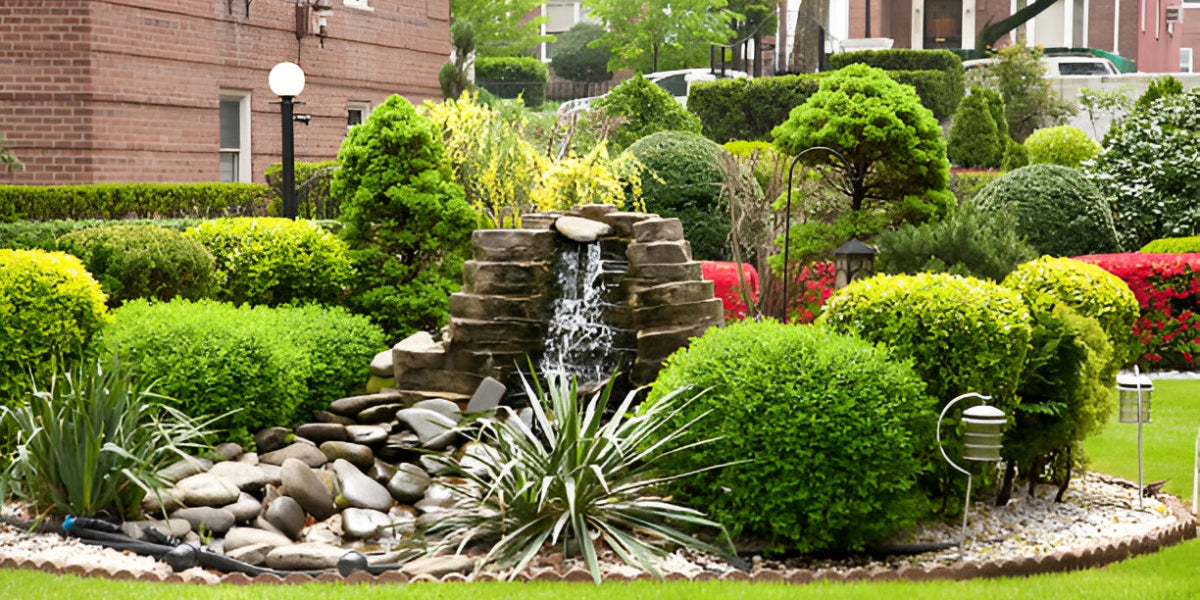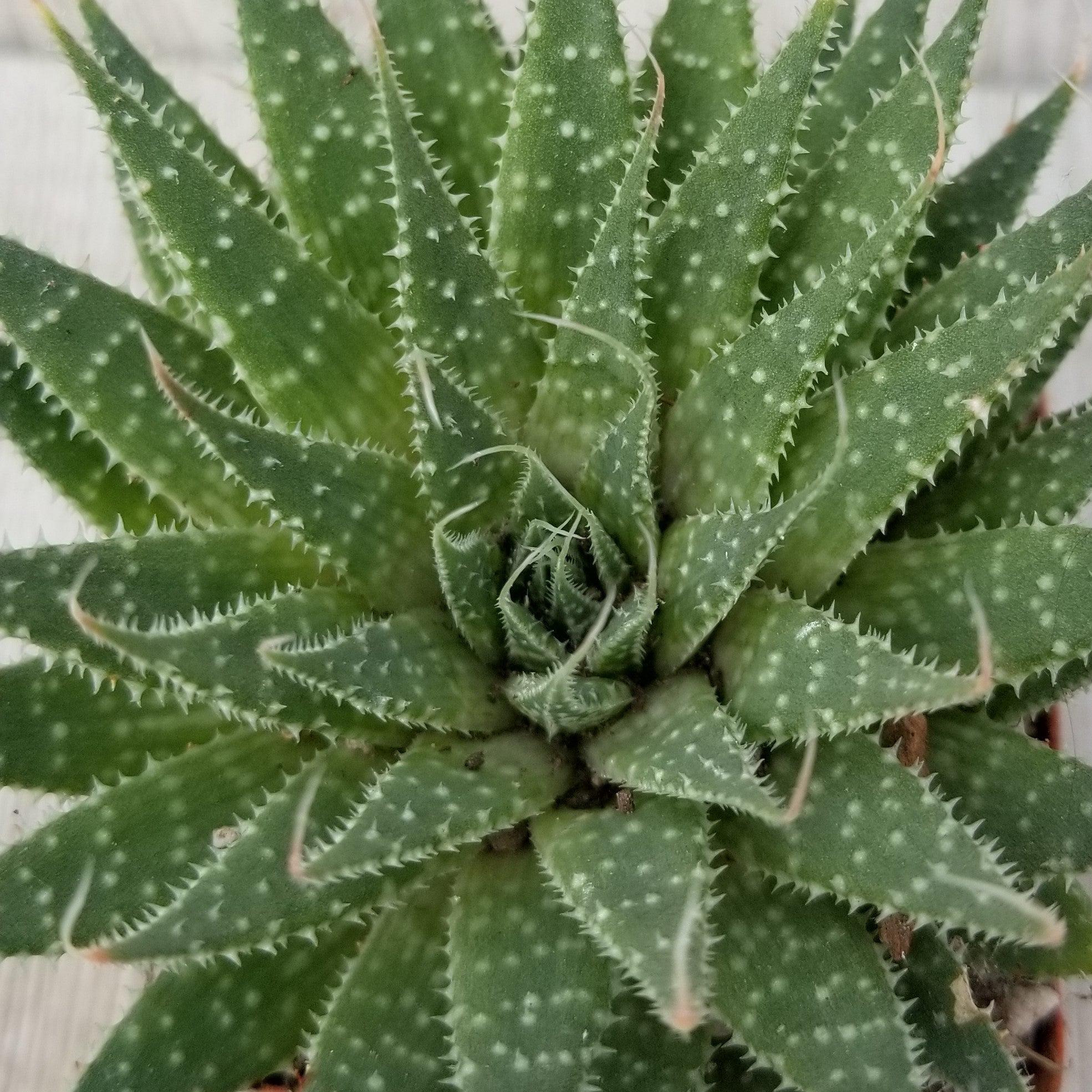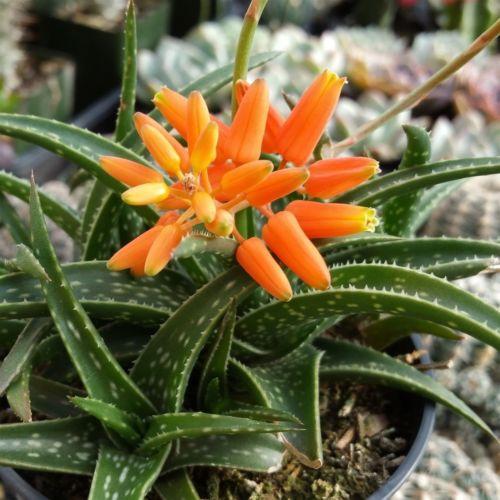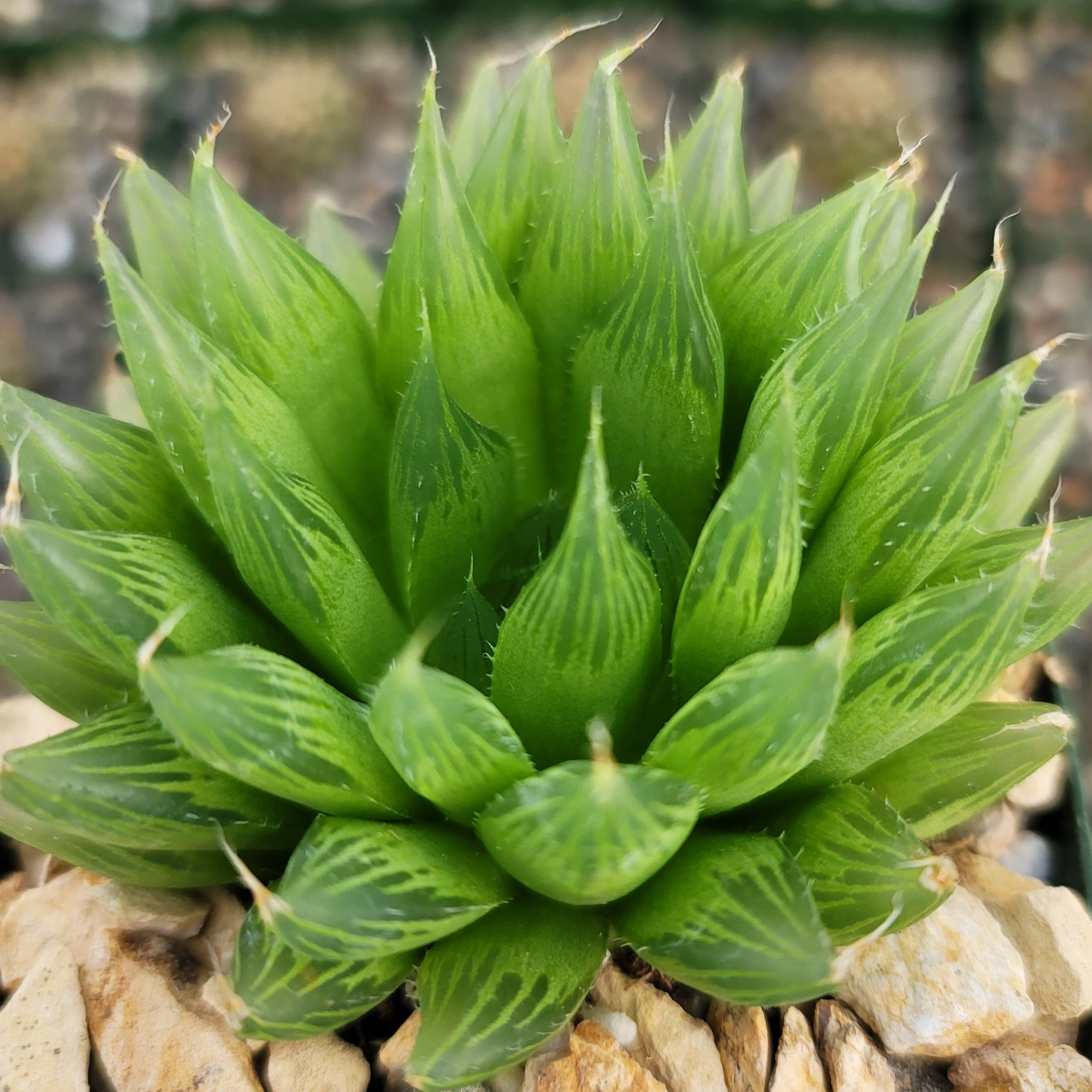Xeriscaping Guide – Landscaping with Drought Tolerant & Resistant Plants
Updated: January 28, 2025
The term Xeriscaping is a combination of two words "xeric" means "dry" and “scaping” comes from “landscaping”, also, known as drought tolerant landscaping design. It is a practice of designing resilient and stunning landscapes and is essentially a drought tolerant landscaping design technique for people who wish to have a lush green garden that is water-saving, space-saving, stunning, and budget-friendly.
Having a Xeriscaped backyard or front yard means you don't have to worry about your little green friends dying in the scorching sun or having to water frequently. It involves the use of drought tolerant/resistant plants that are low demanding and can thrive happily with minimal effort. With this sustainable gardening approach, you don’t have to deal with droughts, limited water supplies, and high-water bills.
Xeriscape Design – Your Water Wise Landscaping Choice
Imagine a landscape thriving without a constant thirst for water. That's the magic of xeriscaping, where water conservation meets economic savvy. The Xeric Garden is a necessity in areas where water is regarded as a limited and expensive resource.
A traditional lawn requires up to 60% more water than a xeriscape garden in order to maintain the lush green beauty of the garden.The EPA wrote a report that stated that traditional gardening is using approximately one-third of all of America’s residential water supply.
To cope with this problem several states including California and Nevada have offered incentives to those who switch to xeriscaping and the stats reveal that every household switching to xeriscaping saves approximately 120 gallons of water per day!
Xeriscaping can reduce gardening water consumption by 50-70% and you will still create a garden that your neighbours will be envious of.

Top Benefits of Xeriscape Landscaping
Embarking on the journey of xeriscaping isn't just about saving water; it's a transformative shift that brings a multitude of benefits to your beloved garden. Let's unpack the lush benefits of embracing xeriscaping:
Uses Up to 70% Less Water than Traditional Gardens: Xeriscaping champions water conservation like a superhero. By incorporating drought tolerant plants and smart irrigation methods, it reduces water consumption by an astounding 50-70%. Your garden becomes a masterpiece that sips water wisely.

Increases Your Property Value: A well-designed xeriscaped garden can enhance the curb appeal of a property and increase its value. The low maintenance aspect of xeriscaping is also appealing to potential buyers.
Xeriscaping offers a Versatile Landscaping Design approach that is also Visually Appealing: Xeriscaping can be applied to various types of landscapes, ranging from small urban yards to large rural properties. It is adaptable to different climates and soil types, making it a viable option for many regions.
Xeriscape gardens are budget-friendly, visually stunning, and cost-effective, featuring vibrant colors, textures, and blooming flowers, making them an attractive alternative to traditional gardens.
Super Easy Garden Maintenance: Xeriscaping champions water conservation like a superhero. By incorporating drought tolerant plants and smart irrigation methods, it reduces water consumption by an astounding 50-70%.Your garden becomes a masterpiece that sips water wisely.
Xeriscaping is Environmentally Friendly: Xeriscaping landscapes are an effective way to conserve water, create a beautiful outdoor space, and support local wildlife. By choosing the right plants and designing with water conservation in mind, we can create a sustainable and ecologically beneficial landscape. Additionally, xeriscaping landscaping help support local wildlife and increase biodiversity by creating sustainable habitats and conserving water resources effectively.

Best Types of Xeriscaping Plants
Below, you'll learn about selecting the ideal xeriscape plant. Succulents and cactus, are the best drought tolerant plants. They have mastered the art of thriving in prolonged periods of water deficiency. They can store water in their leaves and stems as a result thrive happily for months without water. They are the real champions of dry spells.
Drought Tolerant Vs. Drought Resistant Plants - What's the Difference?
1. Drought Resistant Plants:
Cacti and succulents truly shine as the ultimate drought-resistant plants, with many varieties capable of surviving a year or more without water. Their unique adaptations, like water-storing tissues and reduced leaf surfaces, allow them to thrive in arid conditions. Similarly, camels are known for their ability to store water in their humps, aiding them in surviving long periods without drinking. While tumbleweeds and a few other plant types also exhibit drought resistance, cacti and succulents stand out for their exceptional ability to endure extended periods of drought.
When it comes to xeriscaping, cacti and succulents are unrivaled choices due to their minimal water requirements. These plants are perfectly suited for xeriscaping landscapes as they need the least amount of watering among all plant types. Their water-efficient nature, coupled with their striking appearance and low maintenance needs, make cacti and succulents the ideal candidates for creating beautiful, sustainable xeriscapes that thrive in dry climates while conserving water resources.
2. Drought Tolerant Plants:
Drought tolerant plants are known for their ability to withstand dry conditions, have developed mechanisms to conserve water effectively. While they can survive periods of drought, they may still need occasional watering to thrive. These plants can adapt to limited water availability by storing water in their leaves, stems, or roots, or by reducing water loss through features like thick cuticles or small leaves. Some examples of drought-tolerant plants include lavender, rosemary, and some succulents.
Our Top 15 Favorite Xeriscaping Plants
There are many xeriscape-friendly plants but on top of the list are cactus and succulent. Discover our top picks for drought-tolerant and drought-resistant xeriscaping plants that will enhance the beauty of your landscaping.

1
Golden Barrel Cactus (Echinocactus grusonii)
BUY AT PLANET DESERTkeypoints:
- USDA Hardiness Zones: 9,10,11
- Blooming Period: Mid Summer
- Mature Size: 4 feet tall, 3 feet wide
- Flower Color: Yellow
Meet the Golden Barrel Cactus, a spherical succulent that adds a touch of desert glamour to your garden. This is a great focal point plant that draws attention and creates visual interest. Its golden spines and distinctive shape make it a standout choice for desert landscapes.

2
Foxtail Agave (Agave attenuata)
BUY AT PLANET DESERTkeypoints:
- USDA Hardiness Zones: 9,10,11
- Blooming Period: Winter, Spring
- Mature Size: 4 feet tall – 7 feet wide
- Flower Color: Greenish Yellow
The Foxtail agave is another focal point plant. It adds aesthetic appeal and creates a sense of balance and harmony in the landscape. With its plume-like fronds, bring a touch of elegance to your collection. Delicate and visually striking, it's an excellent choice for those seeking a unique succulent variety. With its plume-like fronds, bring a touch of elegance to your collection. Delicate and visually striking, it's an excellent choice for those seeking a unique succulent variety.

3
Blue Chalk Sticks (Senecio mandraliscae)
BUY AT PLANET DESERTkeypoints:
- USDA Hardiness Zones: 9,10,11
- Blooming Period: Mid Summer, early autumn
- Mature Size: 18 in. tall – 24 in. wide
- Flower Color: Dull white
The Blue Chalk Sticks, with their striking blue-green hue, are one of the favorite ground cover plants. Their splash of color makes an excellent contrast with other green plants. These drought-tolerant succulents not only add color but also thrive in arid conditions with minimal care.

4
ET Fingers (Crassula ovata Gollum Jade)
BUY AT PLANET DESERTkeypoints:
- USDA Hardiness Zones: 9, 10, 11, 12
- Blooming Period: Spring
- Mature Size: 3 feet tall, 2 feet wide
- Flower Color: White, light pink
The Gollum Jade, has tubular leaves and it is a playful addition to any xeriscape garden. Its unique form and easy care make it a favorite for both beginners and seasoned plant enthusiasts.

5
Firestick Cactus - Euphorbia tirucalli 'Firesticks'
BUY AT PLANET DESERTkeypoints:
- USDA Hardiness Zones: 9, 10, 11
- Blooming Period: Late Spring - early Summer
- Mature Size: 30 feet tall – 10 feet wide
- Flower Color: Yellow
The Firesticks are aptly named for their red and orange tips, bringing a burst of color to your succulent landscaping collection. Drought-tolerant and visually stunning, they thrive in sunny conditions.

6
Black Rose - Aeonium arboreum zwartkop
BUY AT PLANET DESERTkeypoints:
- USDA Hardiness Zones: 9,10,11
- Blooming Period: Late winter, spring
- Mature Size: 5 feet tall, 3 feet wide
- Flower Color: Yellow
The black Rose succulent, with its dark, dramatic rosettes, is a captivating choice for those who crave a touch of mystery in their xeriscape front yard. Low-maintenance and striking, it's a statement plant. Low-maintenance and striking, it's a statement plant.

7
Madagascar Palm Plant - Pachypodium lamerei
BUY AT PLANET DESERTkeypoints:
- USDA Hardiness Zones: 9, 10, 11
- Blooming Period: Spring, early summer
- Mature Size: 20 ft. tall (Outdoor), 9 ft. tall (Indoor)
- Flower Color: White
Although not a true palm, the Madagascar Palm emits tropical vibes with its slender trunk and feathery leaves. This unique succulent is an exotic addition that flourishes in bright, indirect light.

8
Mexican Fence Post Cactus 'Pachycereus marginatus'
BUY AT PLANET DESERTkeypoints:
- USDA Hardiness Zones: 9, 10, 11
- Blooming Period: Late Spring - Summer
- Mature Size: 15 feet tall – 10 feet wide
- Flower Color: Pink, red
The Mexican Fence Post, standing tall and columnar, adds vertical interest to your xeriscaped backyard. With its neat rows of spines, it's both an architectural delight and a hardy choice for xeriscaping landscapes.

9
African Milk Tree (Euphorbia trigona 'Rubra')
BUY AT PLANET DESERTkeypoints:
- USDA Hardiness Zones: 9, 10, 11
- Blooming Period: Spring, Summer
- Mature Size: 9 feet tall, 2 feet wide
- Flower Color: Red, White
The African Milk Tree, with its branching arms and fleshy leaves, brings a touch of the African savannah to your Xeriscape Front yard. Drought-resistant and visually striking, it's a unique addition to your succulent collection.

10
Blue agave (Agave Tequilana)
BUY AT PLANET DESERTkeypoints:
- USDA Hardiness Zones:9, 10
- Blooming Period: Summer
- Mature Size: 8 feet tall, 10 feet wide
- Flower Color: Pale green, Yellow, Red
The Blue Agave, famous for its role in tequila production, is a striking succulent with spiky, blue-gray leaves. Drought-tolerant and visually arresting, it adds a touch of the desert to your water-wise garden.

11
Rainbow Bush (Portulacaria afra variegata)
BUY AT PLANET DESERTkeypoints:
- USDA Hardiness Zones: 9, 10, 11
- Blooming Period: Late Spring, early summer
- Mature Size: 10 feet long
- Flower Color: Lavender pink
The Rainbow Bush, with its variegated leaves, is a succulent gem that adds a splash of color to your xeriscaping garden. Easy to care for and versatile, it's a wonderful choice for both beginners and experienced gardeners.

12
English Lavender (Lavandula angustifolia)
keypoints:
- USDA Hardiness Zones: 5, 6, 7, 8, 9, 10
- Blooming Period: Summer
- Mature Size: 3 feet tall, 3 feet wide
- Flower Color: Bluish-purple, Lavender, Violet-blue, White-pink
The English Lavender is a great choice if you want a plant that is drought resistant and has aromatic foliage. Lavender, with its fragrant purple flowers and silvery-green foliage, adds a touch of beauty and tranquility to water-wise landscapes.

13
Giant Hyssops (Agastache scrophulariifolia)
keypoints:
- USDA Hardiness Zones: 3, 4, 5, 6, 7, 8, 9
- Blooming Period: Summer
- Mature Size: 6 ft. tall
- Flower Color: Lavender to pink
The Giant Hyssops, known for their tall spikes of colorful blooms and minty-scented leaves, attract pollinators and provide visual interest. These hardy perennials thrive in sunny, well-drained soil and require minimal water once established, making them ideal choices for creating sustainable and vibrant xeriscape gardens.
14
Spineless Yucca Tree (Yucca elephantipes)
BUY AT PLANET DESERTkeypoints:
- USDA Hardiness Zones:9, 10, 11
- Blooming Period: Summer
- Mature Size: 3 feet tall, 25 feet wide
- Flower Color: Creamy White
Spineless Yucca is a yucca tree native to Mexico and Central America, with sword-shaped leaves that can grow up to 30 feet in height. It grows compact indoors or in containers, and matures into short, branching trees with bare trunks covered in spiraled rosettes. Its architectural form and low maintenance make it popular among plant enthusiasts. It is important to note that all types of yucca are beneficial in different ways, from the ornamental Yucca linearifolia to the edible Yucca rostrata.

15
Aloe Vera (Aloe barbadensis 'miller')
BUY AT PLANET DESERTkeypoints:
- USDA Hardiness Zones: 9, 10, 11
- Blooming Period: Spring, Summer
- Mature Size: 3 ft. tall, 2 ft. wide
- Flower Color: Yellow, red, orange
Aloe vera is a fantastic example of a drought-tolerant plant that can truly elevate your xeriscaping landscaping. With its succulent nature and water-storing abilities, aloe vera is well-equipped to thrive in dry conditions with minimal water. Its striking appearance, low maintenance requirements, and resilience to drought make it a perfect choice for xeriscaping, where water conservation and sustainability are key. Incorporating aloe vera into your xeriscape design not only adds beauty and texture but also contributes to a water-efficient and environmentally-friendly landscape that can withstand dry spells with ease. Learn more...
The 7 Main Principles of Xeriscaping
Xeriscaping is not just a fancy term; it's a smart and sustainable approach to landscaping that helps conserve precious water resources without compromising on aesthetic appeal. Whether you're an experienced gardener or just starting out, embracing xeriscaping ideas will revolutionize the way you think about gardening.
As defined by the Denver Water Department, the following are the fundamental principles of xeriscaping that homeowners can use to create functional xeriscape gardens.
1. Versatile Xeriscape Designs
Xeriscaping offers the chance to experiment with diverse plant layouts and unleash your creative design instincts. These landscaping designs change in response to your soil, climate, and aesthetic preferences.
You can create a captivating cactus garden or an array of blooming flowers, depending on the materials available. You can introduce lavender with its aromatic allure or cultivate a fruitful haven with walnuts, artichokes, or sapodillas.

A wildlife-friendly approach can also be employed, using native plants to create a habitat that promotes biodiversity and a harmonious environment. The possibilities are as diverse as the flora itself, allowing you to sculpt a xeriscape idea that reflects your individual style and preferences.
2. Choosing The Best Types of Plants
You can get the right plant from the xeriscaping plant list described above. Or explore our favorite Succulents and cactus selection to get the perfect drought tolerant. Also, be sure to choose plants adapted to the local climate is crucial in xeriscaping. Choosing plants adapted to the local climate is crucial in xeriscaping. Opting for native and drought resistant species ensures that your garden thrives without excessive water requirements. Thoughtful plant selection contributes to the overall sustainability of the landscape.

3. Use Advanced Water Conservation Techniques
To maintain a healthy xeriscape, water your plants only when the soil has thoroughly dried out. Overwatering can lead to root rot, especially for drought-tolerant species like succulents, which are susceptible to moisture-related issues.
- During summer, aim to water them no more than once every 2-3 weeks. Ensure the soil is dry to a depth of 1-2 inches before watering again.
- In winter you probably do not need to water them at all. To optimize water usage, strategic scheduling is key.
The following steps can be taken to boost work efficiency:
- Automated irrigation systems improve efficiency and aid in resource conservation. Yet, if you're willing to water manually once or twice a month when the soil is dry, you may not necessarily require an automated system.
- Avoiding watering during windy or rainy days and opting for early morning or late-night watering.
- This thoughtful approach ensures that water penetrates the soil effectively, reaching the roots without interference from the heat of the day.
- Through a carefully designed greywater system, homeowners can channel water from household activities directly to thirsty plants, providing a secondary source of hydration.
- The harvested rainwater from strategically positioned rain barrels or cisterns is a supplementary hydration source for xeriscape gardens during dry spells.
4. Proper Soil Management
Focusing on enhancing soil quality is vital in xeriscaping. The soil used in such designs must be well-drained. While designing a xeriscape, consider creating a gravelly rock garden, preferably on a slope where water can flow away more easily.

Incorporating rocks and stones, such as granite, pavers, river rock, or lava rock, not only adds aesthetic appeal but also enhances drainage and complements the overall landscape with its diverse structures and colors.
5. Design Using Small Rocks and/or Mulch
Mulching plays a key role in xeriscaping by reducing evaporation, suppressing weeds, and moderating soil temperature.
Applying a layer of organic or inorganic mulch around plants helps conserve moisture, promoting a more water-efficient garden.
Rock and stones enhance the glam of the landscape.
Granite, pavers, river or Lava rock can be used to improve drainage and aeration.
Rocks and pebbles help in water conservation by reducing evaporation of water from the soil.

By using mulch and/or small rocks prevents weeds from growing, so you do not need to weed your garden. Unlike organic mulches, lava rock does not decompose over time, making it a long-lsting option for no maintenance landscaping Get a Rock Garden DIY Kit from our online store Plant Desert.
6. Reduce or Eliminate the Use of Grass
Plant drought tolerant grasses or no grass at all. Instead of traditional turfgrass, opting for water-efficient alternatives such as buffalograss or hardy yellow grass not only conserves water but also reduces the demand for resources.
7. Properly Maintain Your Desert Landscape
Drought resistant plants are in the spotlight. Place each plant in its optimal environment based on specific growth requirements like light and temperature. Ensuring the right plant is in the right place is crucial. This strategic placement not only enhances the plant's health but also contributes to the overall efficiency of xeriscaping. By following proper care routines, including timely pruning, weeding, and monitoring plant health, xeriscapers create landscapes that not only conserve water but also require less time and effort to maintain.

Final Thoughts
In a world where saving water and being eco-friendly matter more than ever, xeriscape landscaping steps in as a fantastic solution. It's not just about helping the environment; it's about turning your outdoor space into something truly beautiful. With drought-tolerant plants, smart irrigation techniques and taking good care of the soil, xeriscape is the cool, water-savvy way to go.
With the use of drought tolerant and resistant xeriscaping plants, your garden becomes a masterpiece that sips water wisely. Usually, watering every two to three weeks is sufficient in the summer. In winter, if there's no rain, watering once a month at most is still advisable. These plants intelligently save water, benefiting the environment and concurrently reducing irrigation costs, fostering sustainability and economic efficiency in landscaping.
Say goodbye to old-school landscaping that wastes resources, and say hello to a greener, more sustainable approach. It's not just a smart choice for the planet – it's a win-win for homeowners too. Ready to transform your yard? Go ahead, your yard and your wallet will Thank you!
Frequently Asked Questions
-
What is the definition of Xeriscaping?
Xeriscaping is the process of designing landscapes with water conservation in mind, utilizing drought-tolerant/resistant plants, efficient irrigation techniques, soil improvement methods, and mulching with small rocks to avoid weeding and evapotranspiration. The term "xeriscaping" originates from the Greek word "xeros," meaning dry, and "scape," referring to landscape. By embracing xeriscaping principles, individuals can create beautiful and environmentally friendly front yards that thrive with minimal water input.
-
What is xeriscape landscaping and how does it differ from traditional landscaping?
Xeriscape landscaping is a water-efficient approach that focuses on using drought-tolerant plants, efficient irrigation, and soil management, differing from traditional landscaping by promoting sustainability and water conservation.
-
How can xeriscape landscaping help conserve water in areas with scarcity?
Xeriscape landscaping conserves water in water-scarce areas by utilizing drought-tolerant plants, implementing efficient irrigation methods, and reducing overall water demand in landscaping.
-
Are there any specific plant species that are commonly used in xeriscape landscapes?
Succulents and cactus are all drought tolerant plants that are excellent for xeriscaping. Common plant species in xeriscape landscapes include Golden Barrel Cactus, Lavender, Agave, Sedum, and Rosemary, known for their water-efficient and resilient qualities.
-
Can you explain the economic benefits of choosing a xeriscape landscape design for your front yard?
Opting for a xeriscape landscape design for your front yard can lead to economic benefits by reducing water bills, lowering maintenance costs, and potentially increasing property value.
-
How does xeriscape landscaping save space compared to traditional garden designs?
Xeriscape landscaping saves space compared to traditional gardens through strategic plant placement, incorporating ground covers, and minimizing the need for extensive turf areas.
-
What are some key features or elements that make a stunning xeriscape landscape?
Stunning xeriscape landscapes feature a harmonious mix of native, drought-resistant plants, well-designed hardscapes, efficient irrigation systems, and creative use of mulch and rocks.
-
Is it possible to create a lush green garden with drought-tolerant plants through xeriscaping?
Yes, xeriscape landscaping allows you to create a lush green garden using drought-tolerant plants, fostering a vibrant and sustainable outdoor space.
-
Can you provide an estimate of the potential cost savings by opting for a budget-friendly xeriscape landscape over traditional gardening methods?
The potential cost savings with a budget-friendly xeriscape landscape can vary, but estimates suggest up to 60% savings in water bills and reduced maintenance expenses over time.
-
What are the key benefits of choosing xeriscape landscaping for my front yard?
The key benefits of choosing xeriscape landscaping for your front yard include water conservation, reduced maintenance, potential cost savings, and the creation of an aesthetically pleasing, sustainable outdoor space.























